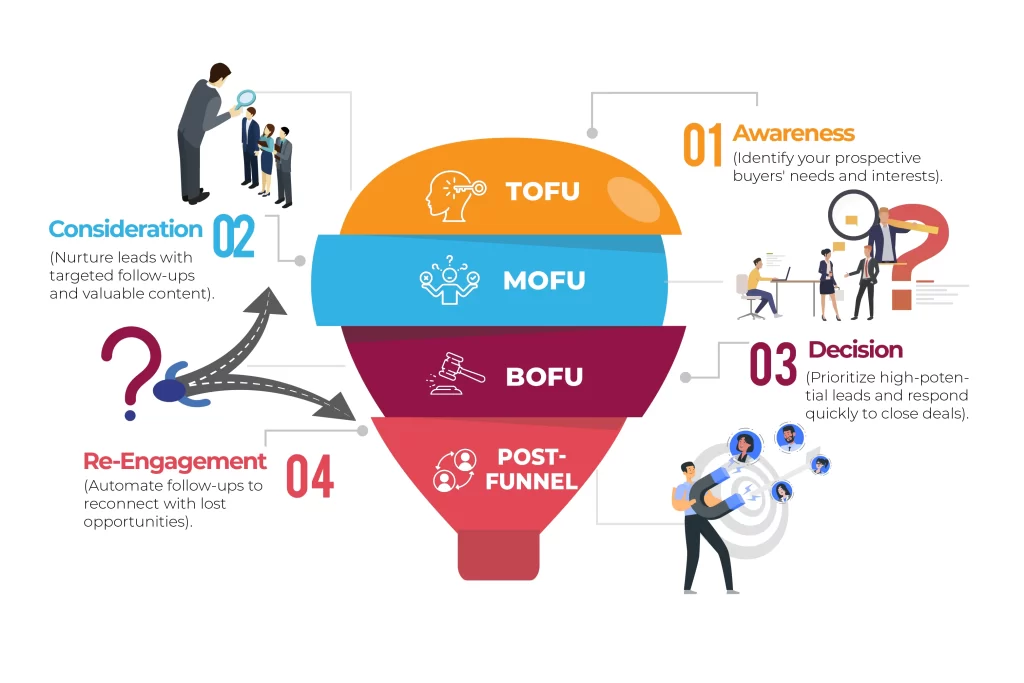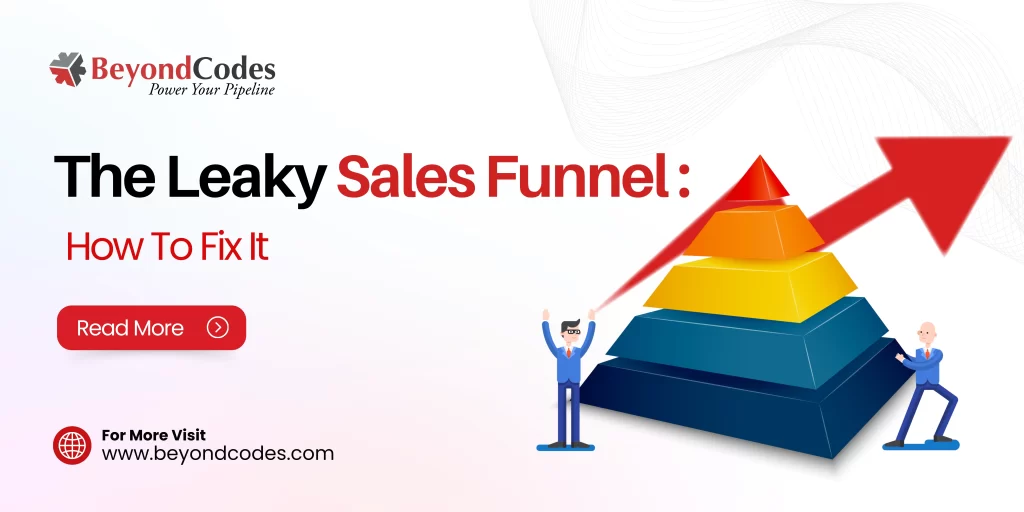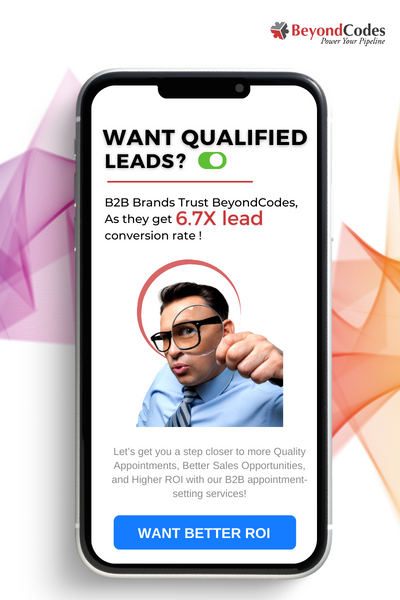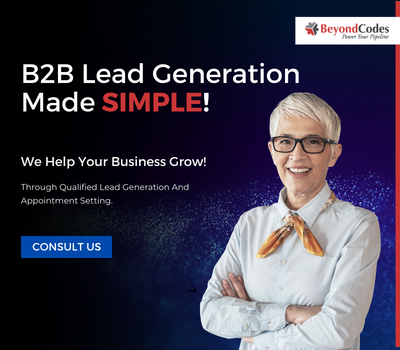Have you ever felt like your best leads are sliding through the cracks, no matter how hard your inside sales team worked? Well, you’re not alone, and the reason is—a leaky sales funnel.
Here’s the hard truth: 79% of leads never convert. That represents a significant potential revenue loss, leaving your team dissatisfied and your marketing efforts wasted. A leaky funnel doesn’t just drain your revenue—it increases costs, slows growth, and makes even the good campaigns fall flat.
But here’s the good news: a leaking sales funnel isn’t the end of the road. By identifying where your funnel leaks and taking targeted action, you can close gaps, optimize your process, and convert more leads into loyal customers.
Ready to stop the leaks and start converting? Let’s dive in
What Is Leaky Sales Funnel? An Overview
A sales funnel is more than just a conduit from prospect to customer; it is a dynamic process that shows the effectiveness of your sales strategy. At each stage, the funnel naturally narrows as unqualified leads drop out. However, leaks disrupt the flow, resulting in missed opportunities, wasted resources, and dissatisfied teams.
A leaky sales funnel occurs when leads enter your B2B sales process but do not convert into recurring clients. These leaks can occur anytime, including initial outreach, nurturing, and closing a sale.
The consequences are clear: lower conversion rates, stagnating income, and an increasing gap between sales and marketing efforts.
If you notice high drop-off rates, unresponsive prospects, or a slow sales cycle, it’s a sign that your funnel needs to be improved. Identifying where and why these leaks occur is the first step toward fixing them.
Why Do Sales Funnel Leak?
1. Poor Lead Qualification
Not every lead is a good match for your business. When salespeople follow unqualified leads, they waste time, effort, and money. Without a straightforward and disciplined qualification procedure, your sales funnel becomes congested with leads who are unlikely to convert, slowing down the overall sales process and decreasing efficiency.
Fix: Clearly define your Ideal Customer Profile (ICP) to find high-value prospects. Implement lead scoring and segmentation strategies to prioritize leads with the highest potential, ensuring your team focuses on the right opportunities.
2. Delayed Follow-Ups
Timing is essential in sales. According to studies, the vendor who responds quickest receives 35-50% of the sales. If your team fails to engage leads quickly, they lose interest and go to more responsive competition. Delays in follow-up can drastically lower your chances of closing sales.
Fix: Set up an automated way to reply to inbound leads instantly. For outbound efforts, leverage a CRM platform to track and schedule follow-ups, ensuring no leads fall through the cracks and every opportunity is nurtured properly.
3. Weak Value Proposition
Prospects are unlikely to be drawn in by a generic or ambiguous value proposition. If your outreach does not clearly describe how your product or service addresses a specific problem or adds value, prospects are unlikely to engage or see the value in choosing your solution.
Fix: Create an engaging, customized value proposition that resonates with your target audience. Customize your messaging to address the pain areas and needs of various industries or customer segments, making your sales pitch more relevant and impactful.
4. Inconsistent Messaging
When your cold emails, phone calls, or other outreach activities are inconsistent with the content on your website or marketing materials, it causes uncertainty and undermines confidence. Inconsistent messaging might make your brand appear chaotic, lowering the chances of conversion.
Fix: To retain a consistent brand voice, align your marketing and sales team. Maintain a consistent message across all touchpoints and personalize outreach depending on the prospect’s previous interactions with your brand to foster trust and credibility.
5. Lack of Effective CTAs
Prospects may be unsure about their subsequent actions without clear direction. Emails or phone calls without a compelling call-to-action (CTA) can mislead or distract potential customers, resulting in missed opportunities.
Fix: Incorporate clear and appealing CTAs into all communications, whether it’s to schedule a meeting, download a resource, or request a demo. Make it simple for prospects to take the next step in their purchasing journey by guiding them smoothly through the sales funnel.
How to Do It Right: Strategies for Each Stage of Buyer’s Journey
To fix a leaky sales funnel, you need targeted sales strategies for each stage of the buyer’s journey: top of the funnel (TOFU), middle of the funnel (MOFU), and bottom of the funnel (BOFU).
Top of the Funnel (TOFU): Attract the Right Buyers
Leaks at the top of the funnel frequently arise when a company attracts the wrong audience or fails to engage them successfully. Poorly qualified leads squander resources and rarely convert, leaving your pipeline dry. Identify your prospective buyers’ needs and interests by customizing your content, sales pitch, calls to action, and landing pages.
Use SEO, social media, and paid advertising to attract visitors from your target audience. Create engaging content, such as blogs, eBooks, or webinars, to answer their concerns and build your brand as a reliable resource. Ensure your messaging is clear and consistent, bringing visitors quickly to the next stage of the funnel.
Middle of the Funnel (MOFU): Nurture Leads Effectively
Leaks in the middle of the funnel generally occur when leads are not properly nurtured. Prospects will lose interest or switch to competition if they are not engaged consistently. Using a CRM to automate and organize follow-ups makes tracking engagement easier, helping SDRs respond based on prospect behavior.
Lead In > Contact Made > Needs Defined > Proposal Created > Negotiations Started> Won
Track lead activity, such as website visits or email opens, and utilize that information to deliver targeted follow-ups. To keep your brand top-of-mind, use drip email campaigns that provide value-added content like case studies, testimonials, or product demos. Staying engaged with prospects increases the likelihood that they will make a buying decision.
Also Read, B2B Lead Nurturing: The Ultimate Guide to Expand Your Business
Bottom of the Funnel (BOFU): Prioritize and Close High-Potential Leads
At this stage, deals slip through the cracks when sales teams fail to prioritize the most promising leads or delay their responses. Low-priority leads take up too much time, resulting in the loss of valuable opportunities. To address this, implement a lead scoring system within your CRM that ranks prospects based on their engagement level, demographics, and buying intent.
Focus your efforts on high-scoring leads that are most likely to convert. Ensure your sales team replies quickly—studies show that the vendor who responds first receives 35-50% of the sales. Provide clear CTAs, such as scheduling a demo or requesting a price, to help prospects close the deal.
Post-Funnel: Re-Engage Lost Opportunities
Not every lead converts the first time, but that doesn’t mean they’re lost forever. Leaks can develop when organizations fail to re-engage prospects who did not make an initial purchase. Fixing a leaky sales funnel requires a proactive, structured approach at every stage. SDRs can significantly improve conversion rates and drive more sales by attracting the right buyers, nurturing them effectively, prioritizing high-potential leads, and re-engaging lost opportunities.
To overcome this, automate follow-ups for missing opportunities based on defined timelines, such as contract renewals or product upgrade cycles. Send personalized emails or offers to pique their interest. For example, if a prospect chooses a competitor, contact them when their contract expires. By staying in touch, you build your brand as the go-to option when they’re ready to switch.
Final Thoughts
A leaking sales funnel isn’t a lost cause; it’s a fixable challenge!
- Qualify Your Leads: Not all leads are qualified. Implement lead scoring to target high-value prospects.
- Accelerate Follow-Ups: Responding quickly increases conversions. Use automation to stay ahead.
- Refine Your Value Proposition: Ensure your messaging addresses customer problem areas.
- Maintain Consistency Across Channels: Misaligned messaging confuses prospects; keep it consistent.
- Use Strong CTAs: Guide prospects to clear the following steps, which reduces drop-offs.
- Re-engage Lost Leads: Not every "no" is permanent. Keep in touch and nurture partnerships.
Fix the leaks, streamline your funnel, and convert more leads into repeat customers.
Author
-
With 7+ years of experience and a background in media & communication, she brings stories to life that fuel lead generation success. She transforms complex B2B ideas into content that is clear, engaging, and results-driven—helping key decision-makers take action. A good cup of coffee fuels her writing ideas, and when off the clock, she enjoys unwinding with her dog by her side.








